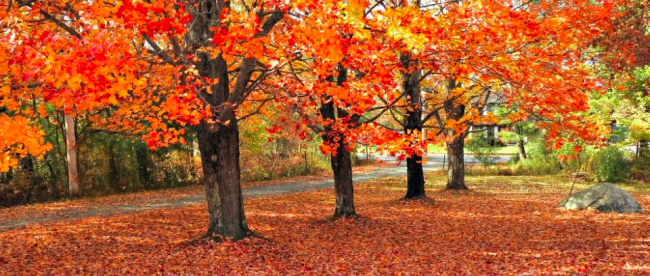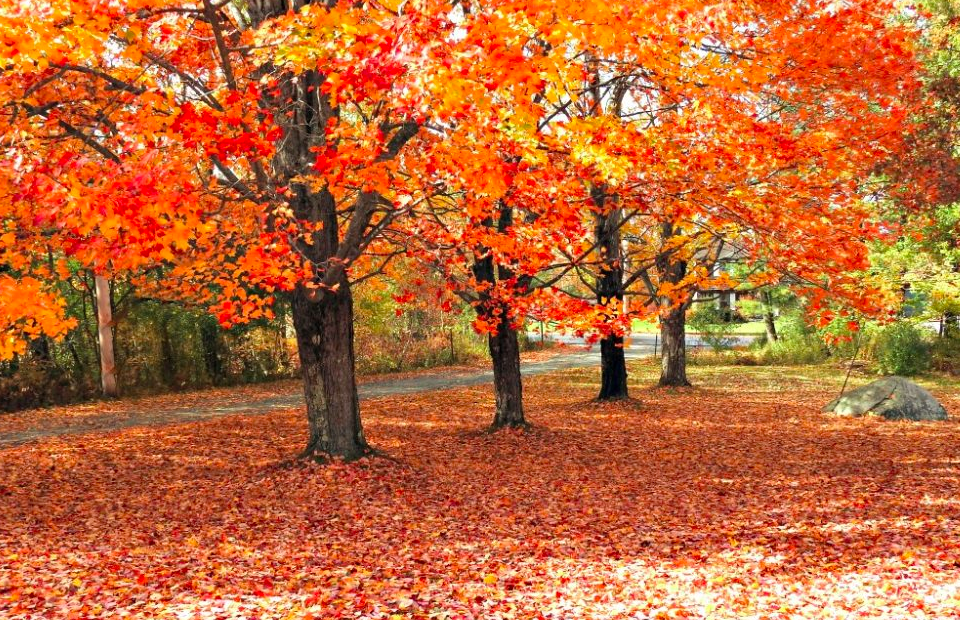Why Do Leaves Fall From Trees?


Throughout the Northern Hemisphere around this time of year, you’ll see images like the one above. There are leaves on the ground everywhere courtesy of the deciduous trees in our neighborhoods. These trees — maple trees, oaks, birch trees, etc. — will make their way through the winter as just trunks and branches, sprouting new leaves when the seasons change.
But why? Why not keep the leaves year-round?
During the warmer months, then-green leaves power the tree, absorbing the sunlight and turning it into food for the plant. But as the season changes, the air gets colder and the water in the leaves begins to freeze. As a result, most trees (not the evergreen type; see today’s bonus fact) can’t rely on photosynthesis as much. These trees, effectively, hibernate — which means they’re not eating. And if they’re not eating, then, as the National Wildlife Foundation explains, these trees needs to conserve energy and “have to reduce themselves to their toughest parts.”
And the leaves? They aren’t very tough. They can’t survive the winter — any water they have in their veins will freeze, killing them in the process. To make matters worse, having too many dead leaves will doom a tree when it comes out of this hibernation-like state, so the tree needs to get these leaves out of the way for new ones which will sprout when the season changes.
So the trees force these leaves out. The approach of winter causes a hormonal response from the trees — basically, a message that it’s time to take a months-long nap and to start by shedding their foliage. NPR’s Robert Krulwich explains the process from there:
[Once the hormones reach the leaves,] little cells appear at the place where the leaf stem meets the branch. They are called “abscission” cells. They have the same root as the word scissors, meaning they are designed, like scissors, to make a cut.
And within a few days or weeks, every leaf on these deciduous trees develops a thin bumpy line of cells that push the leaf, bit by bit, away from the stem. You can’t see this without a microscope, but if you looked through one, you’d see those scissors cells lined right up.
The connection to the branch is weakened by these scissor cells, so when an autumnal breeze comes by, the leaves fly through the air and ultimately float toward the ground. In doing so, the trees save their own lives — and as a side effect, paint the grounds of our communities with leaves of many colors.
Bonus fact: The needle-like leaves of evergreen trees don’t change color, but these trees also power down significantly during the winter. As the National Wildlife Foundation explains in the above-linked article, “their foliage is coated in a wax that helps protect against cold, and their cells bear anti-freeze chemicals that ward off winter’s worst woes.” And these trees also, ultimately, lose their leaves — they just do so more evenly throughout the calendar and over longer periods of time. According to Minnesota Public Radio, “Evergreens put needles on in groups and they tend to lose them in these same groups. It’s kind of like your hair — all of your individual hairs have a cycle of growing and falling out, but they don’t all fall out at the same time.” The entire process (for the trees, not for your head) takes about two to three years.
From the Archives: Grass-O-S: When we mow the lawn, the grass screams for help. Chemically speaking.
